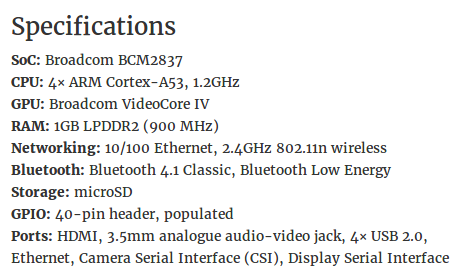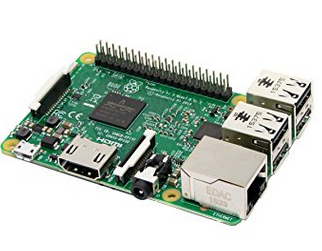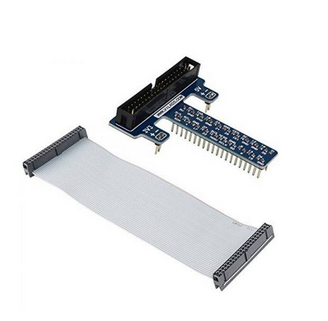
Difference: Lecture6:BringingTheRaspberryPiToLife (1 vs. 2)
Revision 22017-09-14 - uli
| Line: 1 to 1 | |||||||||||||||||
|---|---|---|---|---|---|---|---|---|---|---|---|---|---|---|---|---|---|

Slide 1: The Raspberry Pi and how to bring it to life | |||||||||||||||||
| Added: | |||||||||||||||||
| > > | Lecture 5
A first glimpseThere are several versions of Raspberry Pis available on the market:
Raspberry Pi specs
Operating systems on the PiFrom the specs we can see that the Raspberry Pi 3 is a full blown computer.With its
Currently available OS
BCM2835 CPUThe CPU has got an ARM processor core with 4 64 bit CPUs The operating system and the Linux kernel are still 32 bit versions (After the course you may try to compile and install a 64 bit kernel yourself. This is a very good exercise to understand how the OS is built!) Around the CPU there are plenty of interfaces To know the details (the interfaces only!) have a look at the data sheet explaining them (205 pages!)BCM2835 peripheralsHere are some of the Raspberry Pi peripherals:
Raspberry Pi and the real worldYou can easily connect
Connection to bread board: The cobbler
Other Rpi connectionsI2C is a serial bus often used in computer systems of for short distance interfacing. Many devices having a I2C port are available and we will program a few:
| ||||||||||||||||
| %SLIDESHOWEND% | |||||||||||||||||
| Line: 10 to 117 | |||||||||||||||||
Comments | |||||||||||||||||
| Added: | |||||||||||||||||
| > > |
| ||||||||||||||||
Revision 12017-09-13 - uli
| Line: 1 to 1 | ||||||||
|---|---|---|---|---|---|---|---|---|
| Added: | ||||||||
| > > |

Slide 1: The Raspberry Pi and how to bring it to life--Comments | |||||||
View topic | History: r6 < r5 < r4 < r3 | More topic actions...
Ideas, requests, problems regarding TWiki? Send feedback

